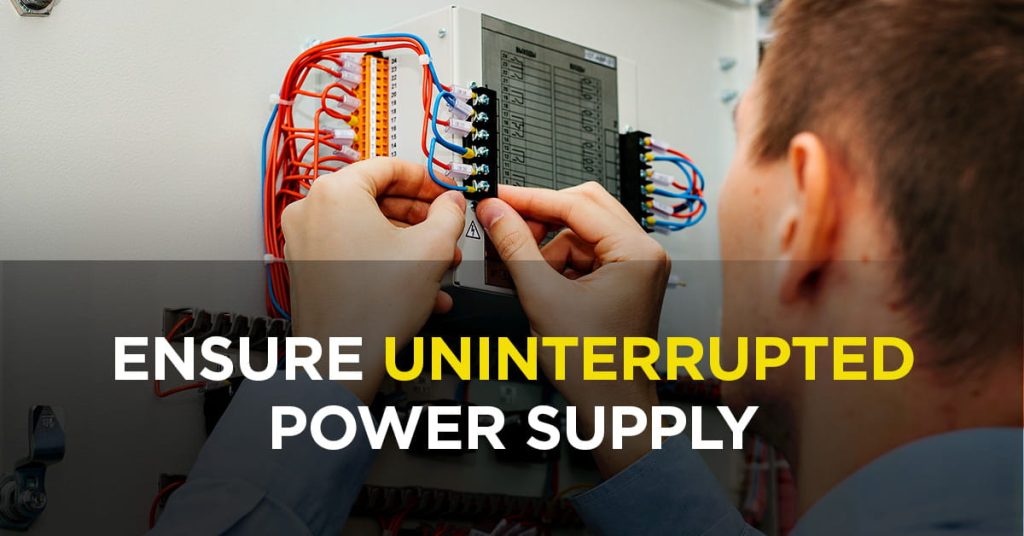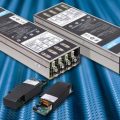In our modern world, a consistent and reliable power supply is vital for the smooth operation of various industries and critical infrastructures. Any power disruption can lead to costly downtime, productivity loss, and potential damage to equipment. To mitigate these risks, businesses, and organizations rely on advanced solutions such as automatic transfer switches (ATS) and automatic voltage regulators (AVR). This blog post will delve into the functionality and importance of ATS and AVR systems in maintaining an uninterrupted power supply.

Understanding Automatic Transfer Switches (ATS)
Automatic transfer switches are essential components of backup power systems. They seamlessly switch the load between the primary power source (utility power) and the secondary power source (backup generator) during power outages or fluctuations. The primary objective of an ATS is to ensure a smooth power supply transition without any disruption to critical operations.
ATS systems monitor the utility power supply continuously. When a power outage or voltage fluctuation is detected, the ATS automatically signals the backup generator to start. Once the generator reaches the desired voltage and frequency levels, the ATS transfers the load from the utility power to the generator power. This swift transition happens within seconds, enabling uninterrupted power flow to critical equipment.
By employing an ATS, businesses can safeguard their operations against the adverse effects of power interruptions. ATS systems are commonly utilized in data centers, hospitals, industrial facilities, and other applications where even a few seconds of downtime can have severe consequences.
Exploring Automatic Voltage Regulators (AVR)
Voltage stability is crucial for the smooth functioning of electrical equipment. Fluctuations in voltage can damage sensitive electronics, leading to equipment failures and data loss. Understanding Automatic voltage regulator (AVR) play a vital role in maintaining a stable voltage output, regardless of variations in the input voltage.
AVR systems are designed to regulate and stabilize the voltage supplied to connected equipment. They monitor the input voltage continuously and adjust the output voltage accordingly. When the input voltage deviates from the desired range, the AVR compensates by adding or subtracting voltage, ensuring a stable output within acceptable limits.
In addition to voltage regulation, AVR systems offer protection against overvoltage and Undervoltage conditions. They are equipped with various protective features to safeguard connected equipment from voltage surges or sags, which can be detrimental to sensitive electronics.
The Importance of ATS and AVR Integration
Integrating automatic transfer switches (ATS) with automatic voltage regulators (AVR) provides an enhanced power management solution, especially for critical applications. The combined functionality of ATS and AVR systems ensures a seamless transition of power during outages or fluctuations while maintaining stable voltage levels.
When power is transferred from the utility supply to the backup generator through an ATS, the AVR comes into play by stabilizing the voltage output from the generator. This integrated approach guarantees the connected equipment a reliable and steady power supply, safeguarding them from potential voltage-related issues.
By utilizing ATS and AVR systems, businesses can minimize downtime, enhance equipment lifespan, and protect critical operations from voltage disturbances. This integration is particularly beneficial for healthcare, manufacturing, telecommunications, and data centers, where uninterrupted power supply is crucial.
In today’s fast-paced world, an uninterrupted power supply is vital for businesses and organizations across various industries. Automatic transfer switches (ATS) and automatic voltage regulator (AVR) offer robust solutions to ensure seamless power continuity and voltage stability.
ATS systems enable a swift and automated load transfer from the utility power to backup generators during outages or voltage fluctuations. Meanwhile, AVR systems stabilize the output voltage, protecting connected equipment from voltage surges or sags.
By integrating ATS and AVR systems, businesses can achieve a comprehensive power management solution. This integration enhances the reliability of backup power systems, minimizes downtime, and protects critical equipment from potential damage.
Investing in ATS and AVR technologies is a proactive step towards ensuring uninterrupted power and maintaining operational efficiency. By prioritizing power continuity, businesses can safeguard operations, mitigate risks, and stay ahead in today’s highly competitive landscape.
Remember, when it comes to seamless power supply, automatic transfer switches, and automatic voltage regulators are the backbone of uninterrupted operations.






